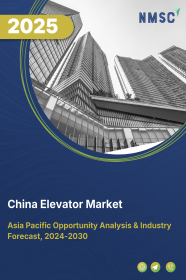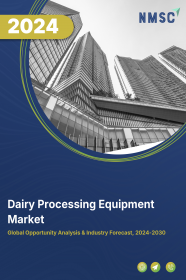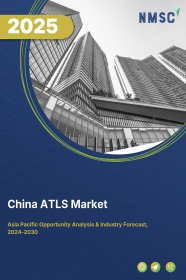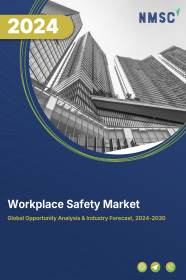
China Elevator Market by Type (Passenger elevator, and Others), by Technology (Traction and Hydraulic), by Service (New Installation, and others), by Capacity (Less than 1500 kg, and Others) by Speed (Less than 1 M/S, and others), by Deck type (Single Deck and Others), by Designation Control (Smart and Conventional), by Door Type (Automatic and Manual), By Operation (Low-Rise, and Others) and Others - Opportunity Analysis and Industry Forecast, 2024 –2030
Industry: Construction & Manufacturing | Publish Date: 09-Apr-2025 | No of Pages: 167 | No. of Tables: 129 | No. of Figures: 74 | Format: PDF | Report Code : CM1649
US Tariff Impact on China Elevator Market
Trump Tariffs Are Reshaping Global Business
Market Definition
China Elevator Market size was valued at USD 19.06 billion in 2023, and is predicted to reach USD 23.87 billion by 2030, at a CAGR of 2.1 % from 2024 to 2030. The elevator industry represents a dynamic sector encompassing the creation, manufacture, installation, and maintenance of elevator systems. From traditional models to cutting-edge smart solutions, this sector offers a wide array of vertical transportation choices tailored to diverse building and infrastructure needs. Key stakeholders include manufacturers, suppliers, contractors, architects, building owners, and facility managers.
Manufacturers continually innovate to enhance elevator performance, safety, and sustainability, while suppliers provide crucial components for system assembly. Sustainability considerations, such as energy efficiency and recyclability, are increasingly integrated into elevator design and operation, supporting broader environmental objectives and sustainable building practices. Thus, the elevator industry serves as a crucial element of vertical mobility, improving functionality, accessibility, and sustainability in global urban environments.
Rising Technological Advancements Drives the Growth of the Market
China's elevator market is propelled by technological advancements and innovation. With rapid urbanization and the construction of increasingly complex buildings, there is a growing need for elevators equipped with advanced features such as energy efficiency, safety enhancements, and smart technologies. elevator manufacturers in China are investing heavily in research and development to meet these evolving demands and stay competitive in the market.
Moreover, the integration of Internet of Things (IoT) technology and artificial intelligence (AI) in elevators is gaining traction, offering improved performance, predictive maintenance, and enhanced user experience. As China continues to prioritize technological innovation across various industries, the elevator market stands to benefit from the adoption of cutting-edge solutions, driving demand for modern and efficient elevator systems in both commercial and residential buildings.
Rapid Urbanization is Propelling the Market Growth
In China, where urbanization and infrastructure development are on the rise, there is a growing need for vertical mobility solutions like elevators and escalators. Mitsubishi Electric's strategic move to emphasize the building systems business aims to cater to the evolving needs of China's urban landscape. By positioning itself as a prominent player in the country's elevator market, Mitsubishi Electric aims to provide innovative solutions and meet the rising demand for vertical mobility solutions not only in China but also across Europe. This strategic alignment underscores the company's commitment to addressing the changing dynamics of China's urban environment and its broader implications for the elevator market.
High Initial Costs Hinder Market Growth Within the Region
The substantial expenses associated with the installation, upkeep, and enhancement of elevators pose barriers to market expansion. From the initial installation outlay to the ongoing maintenance charges and the need for upgrades to meet safety regulations and enhance energy efficiency, building proprietors encounter significant financial challenges. These difficulties are particularly formidable for owners situated in economically disadvantaged areas or within older structures. As a result, the heightened costs linked with elevators impede market growth across various regions.
Integration Of Artificial Intelligence (AI) Within elevators is Expected to Create Future Opportunities for The Market
The incorporation of AI-driven predictive maintenance into the elevator sector presents a compelling prospect, revolutionizing maintenance and operational procedures through AI advancements. By analysing data gleaned from elevator sensors, AI algorithms can predict maintenance requirements in advance, minimizing downtime and maximizing elevator uptime. This proactive strategy not only prolongs the lifespan of elevator components but also improves safety by anticipating unforeseen breakdowns and optimizing resource distribution, leading to substantial cost reductions for elevator companies.
Moreover, well-maintained elevators heighten user satisfaction, thereby elevating the overall experience for building occupants and visitors. Embracing AI-driven predictive maintenance empowers elevator firms to stay competitive and uphold service excellence in an ever-changing market landscape.
Competitive Landscape
The China elevator market comprises various market players, such as Schindler Group, Otis Worldwide Corporation, TK Elevator (TKE), KONE Corporation, Fujitec Co. Ltd, Hyundai elevator Co. Ltd, Mitsubishi Electric Corporation, Toshiba Corporation, Hitachi Ltd., Larsson Elevator Co.,LTD, IFE Elevators Co., Ltd., Canny Elevator, Ningbo Hosting Elevator Co., Ltd. , FUJI Elevator Co., Ltd., Sharp Elevators Co., Limited and others.
China Elevator Market Key Segments
By Type
-
Passenger elevator
-
Freight elevator
-
Others
By Technology
-
Traction
-
Machine Room [MR] Traction
-
Machine Roomless [MRL] Traction
-
-
Hydraulic
By Service
-
New Installation
-
Maintenance
-
Modernization
By Capacity
-
Less than 1500 kg
-
1500 to 2500 kg
-
2501 to 4000 kg
-
More than 4000 kg
By Speed
-
Less than 1 M/S
-
Between 1 to 4 M/S
-
More than 5 M/S
By Deck Type
-
Single Deck
-
Double Deck
By Designation Control
-
Smart
-
Conventional
By Door Type
-
Automatic
-
Manual
By Operation
-
Low-Rise
-
Mid-Rise
-
High-Rise
By Application
-
Residential
-
Commercial
-
Industrial
REPORT SCOPE AND SEGMENTATION:
|
Parameters |
Details |
|
Market Size in 2023 |
USD 19.06 Billion |
|
Revenue Forecast in 2030 |
USD 23.87 Billion |
|
Growth Rate |
CAGR of 2.1% from 2024 to 2030 |
|
Analysis Period |
2023–2030 |
|
Base Year Considered |
2023 |
|
Forecast Period |
2024–2030 |
|
Market Size Estimation |
Billion (USD) |
|
Growth Factors |
|
|
Companies Profiled |
15 |
|
Market Share |
Available for 10 companies |
|
Customization Scope |
Free customization (equivalent up to 80 working hours of analysts) after purchase. Addition or alteration to country, regional, and segment scope. |
|
Pricing and Purchase Options |
Avail customized purchase options to meet your exact research needs. |
KEY PLAYERS
-
Schindler Group
-
Otis Worldwide Corporation
-
TK Elevator (TKE)
-
KONE Corporation
-
Fujitec Co. Ltd
-
Hyundai elevator Co. Ltd
-
Mitsubishi Electric Corporation
-
Toshiba Corporation
-
Hitachi Ltd.
-
Larsson Elevator Co.,LTD
-
IFE Elevators Co., Ltd.
-
Canny Elevator
-
Ningbo Hosting Elevator Co., Ltd.
-
FUJI Elevator Co., Ltd.
-
Sharp Elevators Co., Limited

















 Speak to Our Analyst
Speak to Our Analyst




















